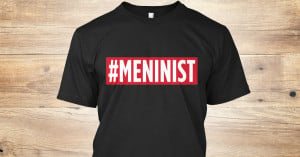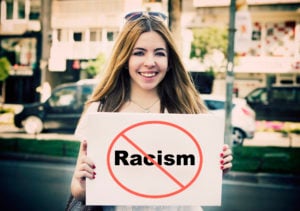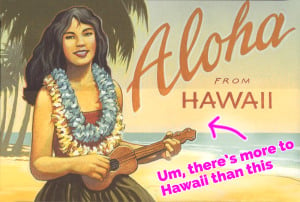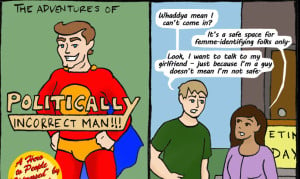
Person reading while drinking out of a mug.
It took me a while to realize that the majority of feminist spaces are entirely trans-exclusionary, even when they don’t claim to be. Even if they have one trans person in attendance every other group meeting, or they feature one of us on their media platform.
Trans and gender variant people’s existences are overlooked, invalidated, and erased every single day.
Our bodies and minds are policed when we enter cisgender-majority spaces, our identities are interrogated, and our narratives are underrepresented.
But all of these contemporary instances are compounded over time, through historical erasure, to form the modern impression that gender variance is a new phenomenon that started up in globally powerful countries like the United States and England.
This notion is ridiculously false. Trans and gender variant people have existed throughout time and across the world, but we haven’t always used the same universal language to describe ourselves.
‘Transness’ may be a recent phenomenon that arose in the United States and England in the sense that the word ‘trans’ originates in Latin and was popularized in English.
Gender variance is a phrase that has been used to describe people who transgress the traditional boundaries of gender in context but who do not use the label ‘trans’ to describe themselves.
Some examples of gender variant identities are yinyang ren in China, kathoey in Thailand, Mahu in Hawaii, and Ninauposkitzipxpe in the Blackfoot Confederacy.
Considering that gender variance exists in many countries and people of color (POC) communities across the world, it definitely isn’t the case that the United States and England are pioneers in gender variance.
Mainstream history, which is often whitewashed and colonized, helps to create this impression. But, really, white colonizers have depicted “Native sexualities and genders” as “deviant, vulgar, and non-livable, their bodies designated for death while white colonizer sexuality and gender binaries signified the moral and social future” in popular culture and mainstream history.
Here’s how I think cisgender, gender variant and trans people can challenge this continuing colonial legacy:
1. Realize that gender variance isn’t a Western or novel phenomenon
The erasure of gender variance that has historically existed outside of the West is a racialized process.
It results from historians’ failure to acknowledge the racialized gendering that occurred during colonization and from the failure of present activists to comprehend its residual effects.
White European and American historians recount colonial ‘encounters’ without attention to the ways that colonizers have tried to control and correct indigenous genders and sexualities in order to achieve conquest.
These processes of criminalizing what is considered to be ‘deviant,’ or wrong, genders and sexualities are an under-discussed part of forced assimilation.
Forced assimilation is a fundamental quality of white colonization. Colonizers who came to what is now called ‘the Americas’ went to dramatic lengths to forcibly assimilate Native and indigenous people, like putting Native kids through boarding schools in which they were abused and ‘civilized’ in accordance with white colonial standards.
One of these standards, common to gender assimilation, is the gender binary. The gender binary is the naturalized system of two genders: male and female.
In “Žižek’s Trans/gender Trouble,” Che Gossett writes that “the gender binary is imbricated in racial slavery and colonization.”
In order to understand how gender variance wasn’t founded in the West but that white Western colonizers have actually erased it in order to promote conquest, we have to understand how racialized gendering processes have occurred.
2. Learn about the racialized gendering processes of colonization and conquest
Gossett goes on also talks about how “the bathroom signs of the Jim Crow era referred to ‘men,’ ‘women,’ and ‘colored’ — dramatizing how the Lacanian ‘sexed body’ is always already a racialized body and a colonized body, and how Black and/or indigenous peoples have always figured as sexual and gender outlaws to be disciplined and punished.”
Colonization and slavery have always involved racialized and gendered discipline toward bodies, especially as a tool of control.
Taking the time to understand the contextual histories of colonization—and the racialized gendering processes that they involve—can help us to move beyond thoughtless acceptance of the universal gender binary and white Western gender pioneering.
3. Question historical texts that accept gender as universal
Feminism might critique historical texts for their exclusion of women, people of color, or trans people, but it rarely goes beyond this inclusivity politics to question the ideologies that produce this historical erasure in the first place.
Mainstream history has accepted the gender binary and cis-ness (that is, the state of being cisgender) as natural and universal, which tends to filter out entire histories and identities.
If we take the time to challenge these naturalized narratives, then we will be able to participate in producing new ones that are honest and legitimizing for trans people of color.
It is possible to do this by challenging historians to research and describe the ways that racialization and gendering have shaped processes of forced migration, enslavement, colonization, and immigration.
4. Help to support the formation of new histories
The formation of new histories is possible, not just through challenging mainstream history, but outside of formal academic structures as well.
NYC Trans Oral History Project (NYC TOHP) is a community-based archive that is “devoted to the collection, preservation and sharing of trans histories.”
According to Michelle Esther O’Brien, a part-time staff member at NYC TOHP, the archive aims to combat erasure and acknowledge the limits of mainstream trans visibility by inviting trans people to share their stories and refraining from editing these recordings once people submit them.
“We are building a long-term archive of trans life as a resource for future trans activists, trans people finding their way in the world, and trans studies scholars and artists,” O’Brien claims.
NYC Trans Oral History Project depends on volunteers. So, if you are interested in transcribing and tagging interviews to make them accessible, spreading the word about their work, or interviewing trans people with a connection to New York in your life, email them at [email protected].
NYC TOHP is a valuable resource for forming new histories. However, it is limited to building the historical narrative in New York alone.
To challenge this focus on the West, consider donating your time and resources to organizations and people located in non-white and non-Western countries. One such organization is Gender DynamiX, which has embarked in “archiving and documenting material and history of trans people throughout” South Africa.
5. Uplift the voices and perspectives of trans people of color
Although the past is an important place for reconstructing history, the present is just as vital. Today, cis people and white trans people hold the most power in representing trans narratives.
If we as trans people stand up against this and make space for each other and ourselves, we can begin to produce histories that move us beyond our past erasure.
[do_widget id=’text-101′]
Ayesha Sharma is a non-binary South Asian scholar and artist continually negotiating a relationship with themselves and their communities through practices of decolonization. They are most interested in literal and symbolic reclamation as an art practice and investing themselves in community care. Ayesha has written for the Urban Democracy Lab and is published in ANTYAJAA: Indian Journal of Women and Social Change.
Search our 3000+ articles!
Read our articles about:
Our online racial justice training
Used by hundreds of universities, non-profits, and businesses.
Click to learn more
Most Read Articles
- « Previous
- 1
- …
- 30
- 31
- 32



















